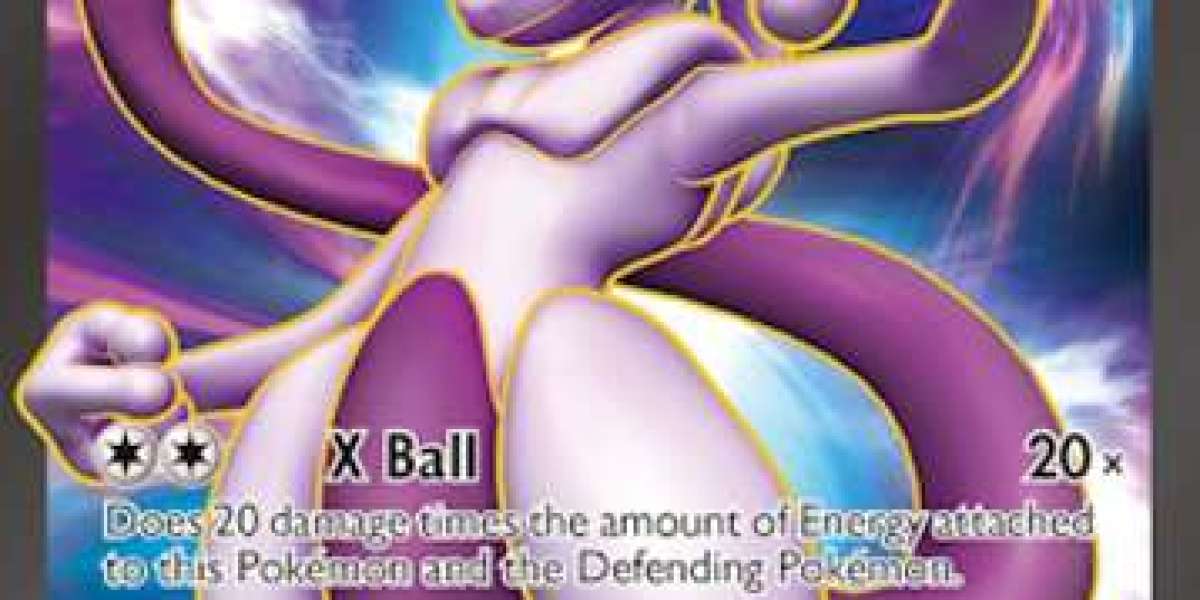Game Design Insights
Analyzing the initial batch of cards from the Genetic Apex set, the debut release of Pokémon TCG Pocket, provides valuable insights into the game's design principles. With access to approximately the first 50 cards, we can begin to assess the intended gameplay dynamics and the strategic depth early on.
A notable observation is that only Pokémon ex and Stage 2 Pokémon feature multiple lines of text—such as special abilities or multiple attacks. In contrast, most other Pokémon are limited to a single attack, even if their original counterparts historically possessed multiple moves or abilities. This design choice suggests a deliberate emphasis on high-impact Pokémon ex and evolved stages to drive the game's core interactions. It indicates that the game encourages players to focus on more advanced and powerful Pokémon to achieve meaningful effects beyond simple damage output.
Overall, the initial card lineup points toward a game that values strategic deployment of key Pokémon and highlights the importance of evolving Pokémon to unlock additional capabilities. The early meta is likely to revolve around leveraging these stronger cards to gain an advantage, setting the tone for competitive play and deck construction.
The impact of new card dynamics in Pokémon TCG Pocket remains uncertain at this stage. However, there is a tendency for the format to favor more powerful cards, which are generally more difficult to acquire or come at a higher cost. This shift could potentially disadvantage players who prefer more affordable or budget-friendly strategies.
Pokémon ex cards are unique to the Pokémon TCG universe. They represent more potent versions of standard Pokémon, including both basic and evolved forms. These ex Pokémon boast increased health points (HP) and more formidable attacks and abilities, making them a significant upgrade over their non-ex counterparts.
Nevertheless, this increased strength comes with a notable risk. As indicated on the bottom right of each ex card, when a Pokémon ex is knocked out, the opponent typically earns two prize cards instead of one. In the context of Pokémon TCG Pocket, this rule has been slightly adapted: instead of prize cards, the opponent gains two points, altering the strategic implications of using ex Pokémon in battles.
In the Pokémon TCG, the concept of Pokémon ex has been a hallmark for indicating powerful, standout cards. These cards are easily identifiable by the prominent ex suffix after their names and feature distinctive artwork that breaks outside the typical boundaries of the illustration frame, emphasizing their special status. Originally introduced in the ex Ruby & Sapphire set, Pokémon ex have recently reappeared in the Scarlet & Violet series, although their mechanics and branding have evolved, with variations such as Lv. X and GX cards emerging over time.
The initial purpose behind designing Pokémon ex was to elevate the game's strategic depth and pace. By introducing more potent Pokémon, players are challenged to weigh the risks of deploying stronger cards—do you risk losing momentum if these powerful Pokémon are knocked out early in the game? This strategic dilemma adds layers of decision-making, making gameplay more engaging and dynamic.
The journey of Pokémon ex in the TCG was lengthy, taking seven years from their debut in the Base Set to their introduction in ex Ruby & Sapphire . Now, with the release of TCG Pocket, players gain immediate access to a selection of these formidable cards. Four notable ex cards have been revealed so far: Pikachu ex, Charizard ex, Mewtwo ex, and Moltres ex.
Pikachu ex boasts 120 HP and can deal up to 90 damage using an attack that requires two Lightning energies. Charizard ex, with a robust 180 HP, has an attack that inflicts 60 damage for three energies, and a more devastating move called Crimson Storm, which deals 200 damage but requires discarding two Fire energies. Mewtwo ex features 150 HP and offers versatility with a 50-damage attack at two energies and a powerful PsyDrive attack that deals 150 damage at the cost of discarding two Psychic energies. Moltres ex, also at 150 HP, has a unique attack that involves flipping three coins; for each head, it can attach an additional Fire energy to benched Fire Pokémon, while its other attack deals 70 damage for three energies.
A significant aspect of these Pokémon ex cards is their emphasis on energies and types, often requiring or promoting specific energy types to unlock their full potential. Mewtwo ex, notably, was among the earliest Pokémon ex introduced into the TCG, setting a precedent for powerful psychic-type Pokémon.
Comparing the original Mewtwo ex from early sets to subsequent versions reveals how the card's design and power level have evolved over time, reflecting shifts in gameplay strategy and card design philosophy. As the Pokémon TCG continues to develop, Pokémon ex remain a symbol of strength, strategy, and the evolving nature of the game.
Mewtwo ex Evolution Insights
Analyzing the evolution of Mewtwo ex across different sets reveals interesting insights into its power progression. The earliest version appeared in the 2003 ex Ruby & Sapphire expansion, followed by a reprint in the 2011 Next Destinies set. The Pocket TCG version of Mewtwo ex appears to be more formidable than its initial release but slightly weaker than the Next Destinies iteration, which is part of the Black & White series. This pattern indicates that the power scaling in TCG Pocket aligns more closely with the game's state around 2010, rather than its formative years in 1996 or during the initial release of Pokémon ex cards.
Within the TCG Pocket lineup of Pokémon ex, Pikachu ex emerges as a notable standout. Despite having lower HP than some counterparts, Pikachu ex can deliver a substantial 90 damage starting from the second turn without the need to evolve, unlike Charizard ex, which requires more energies and setup time. This early damage potential allows Pikachu ex to knock out most basic Pokémon revealed on the field, positioning it as a significant threat if opponents do not neutralize it swiftly.
When comparing Pikachu ex to other Pokémon ex, its advantages become clear:
- Pikachu ex can defeat Charizard ex in just two hits, whereas Charizard ex needs three energies for its standard attack and four for its one-hit KO move.
- Mewtwo ex, another basic Pokémon ex, deals only 50 damage with two energies, making it less effective against Pikachu ex in direct confrontations.
- Moltres ex’s weakness to Lightning-type Pokémon further weakens its ability to counter Pikachu ex effectively.
Therefore, as long as players can quickly establish Lightning-type Pokémon on their Bench, Pikachu ex could become a dominant force early in the game.
Additionally, the TCG includes cards like Rare Candy , which accelerates the evolution process by allowing players to evolve basic Pokémon directly into their final stage without playing through the intermediate stage. This item significantly enhances the speed and flexibility of building powerful evolved Pokémon during matches.
Currently, only two non-stage 2 Pokémon are identified: Gardevoir and Greninja. Their characteristics closely resemble their previous TCG versions, maintaining similar HP levels and abilities. Gardevoir’s ability shares its name and plays a pivotal role in Psychic-themed decks, especially with Psy Shadow boosting the active Pokémon’s power. Meanwhile, Greninja emphasizes raw strength through its Water Shuriken attack, which can inflict 80 damage with just two energies—comparable to Pikachu ex under certain conditions. It can also distribute damage, dealing 60 to the active Pokémon and 20 to a benched one, adding strategic versatility.
The potential integration of Rare Candy into the initial set of Pokémon TCG Pocket raises significant questions. This card would enable players to swiftly evolve Pokémon like Charizard ex and Greninja early in the game, fostering a rapid and high-powered gameplay environment. Evidence suggests that this inclusion is highly probable. For example, Charizard ex, the sole stage 2 ex revealed so far, has modest attacking capabilities for an evolved ex—it requires three energies and consumes considerable resources to unleash its most potent moves. Historically, Rare Candy was legal when Gardevoir and Greninja appeared, indicating the game’s mechanics can support its use.
Introducing Rare Candy at this early stage would accelerate battle tempo, but it wouldn’t necessarily render Stage 1 Pokémon obsolete. Some, such as Kirlia within the Gardevoir ex archetype, could remain central to deck strategies. The game’s early phase might feature high-power levels, producing scenarios like:
- A Slowpoke evolving into Slowbro on the second turn, utilizing Gardevoir’s ability to deal 80 damage while trading only a single prize.
- Charizard ex evolving swiftly via Rare Candy, supported by a Moltres ex and coin flips, enabling it to use Crimson Storm by turn two.
- Strong Basic Pokémon like Kangaskhan, Electabuzz, and Pincurchin competing effectively, especially when exploiting type advantages and bench pressure.
Attack effects and game mechanics may still evolve, with Greninja’s ability exemplifying this uncertainty—its typical requirement to discard an energy card, as seen in recent mechanics like Meowscarada ex, could influence its gameplay viability. Much depends on whether Rare Candy will be accessible, as its presence could enable dominant strategies starting from turn two. Without it, Pokémon like Pikachu ex might become overly powerful, shifting the balance. Overall, the initial format of Pokémon TCG Pocket is poised to be fast-paced from the outset, with little room for a slower, more methodical approach, resembling the quick tempo of Duel Links.
What is Pokémon TCG Pocket and Poké Gold?
Poké Gold serves as the primary in-game currency in Pokemon TCG Pocket , enabling players to enhance their experience by purchasing special items, restoring stamina, and unlocking exclusive collectibles like rare cards and unique covers. Players looking to obtain Poké Gold can conveniently top up through popular trading platforms such as Lootbar.gg, which is known for its reliable customer support. With Poké Gold, users can access more features and customize their collection, making gameplay in Pokemon TCG Pocket even more engaging.
Why do you choose Lootbar.gg for Poké Gold Top up?
If players are looking to top up Poké Gold for the Pokemon Trading Card Game Pocket, they may want to consider using the lootbar game trading platform for a smooth and beneficial experience.
One of the main advantages of choosing Lootbar.gg is the competitive pricing offered to users. The platform frequently provides special discounts and deals, meaning players can save significantly during a Pokemon TCG Pocket top up or when purchasing other game currencies. This makes it easier to enjoy more in-game content without stretching your budget.
Additionally, lootbar takes pride in its commitment to security and customer satisfaction. With robust encryption and data protection measures, all transactions are 100% secure, and your personal information remains confidential. The platform also features fast delivery—often within just three minutes—so you can start using your Poké Gold right away. For any questions or concerns, lootbar offers 24/7 customer support, ensuring you always have help when you need it.
A Step-by-Step Guide to top up Pokémon TCG Pocket on LootBar
To top up Pokémon TCG Pocket Poké Gold on the Lootbar trading platform, follow these simple steps.
- Start by visiting the official Lootbar website at https://lootbar.gg and select your preferred language and currency, then log into your account.
- From the homepage, navigate to the dedicated Pokémon TCG Pocket top up section.
- Decide on the amount of Poké Gold you wish to purchase and click the “Top-up Now” button.
- Enter your Login Account details, Password, and Character name as prompted, and follow the on-screen instructions.
- Choose your desired payment method, proceed with the transaction, and click "Pay Now" to complete your purchase.
- After your payment is confirmed, the top up Pokémon TCG Pocket Poké Gold will be quickly delivered to your account, usually within a few minutes.







